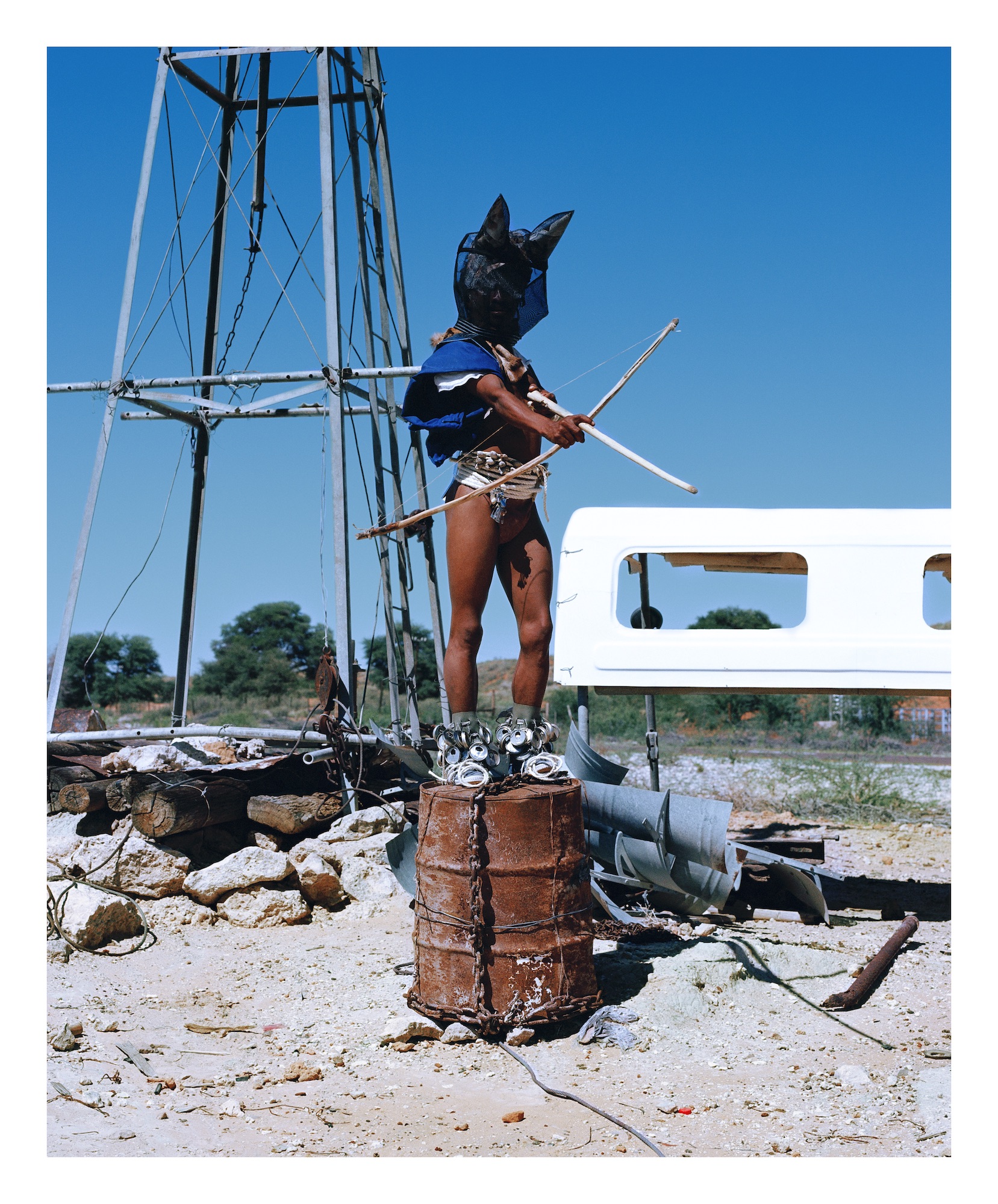


Though I truly believe that this is a wonderful and very impressive exhibition, the first photo to really stand out to me however, was Koos, from the series Khoisan. There is something very mythical about this piece and all together I think the body of work contains a very folkloric essence to it, delving upon African lore and legend. Within this work, Namsa experiments with anachronistic costumes and environments, seeking to subvert the traditional and Western perceptions of African Culture.
Aside from the context of facts behind the work and what themes motivated Namsa’s drive to create these photos, at first glance, one would see a figure perched atop of a rusty metal barrel, cladded in a black horned hood, only to think that this is the protector of the grounds. This horned “spirit” seems to be in a defensive and vigilant stance, as it might want to reclaim the land that was now turned into a place of discarded rubble. Wearing a very minimal blue and white garb, it also accompanies it’s look with a variety of tin-can tops fastened to its ankle braces, inviting the viewer to hear what he would sound like when moving or running. The sound it might produce while dancing could be rhythmic and musical in nature, especially during spiritual ceremonies.
This piece overall, to me, seems like it is a reflection upon the human tendency to hold and control land for themselves. We are very defensive of what we call “home”, whether it be a house or even a sun baked patch of earth in a forgotten land. But through these tendencies our inner spirit comes alive from hundreds of past generations and lives that have led up to now we are all imbued with this very natural and pure energy.
-by Tristan Carey, Halsey Institute intern
image: Namsa Leuba, Koos, 2014. From the Khoisan series.